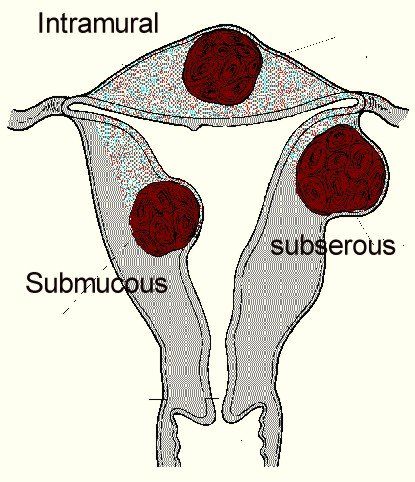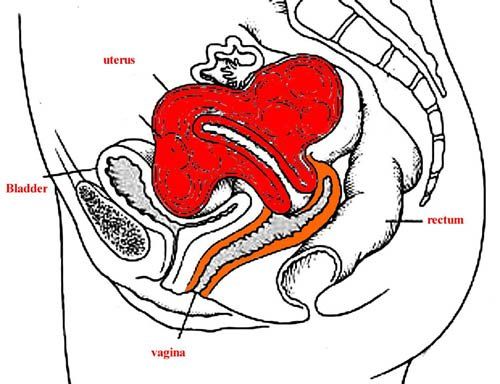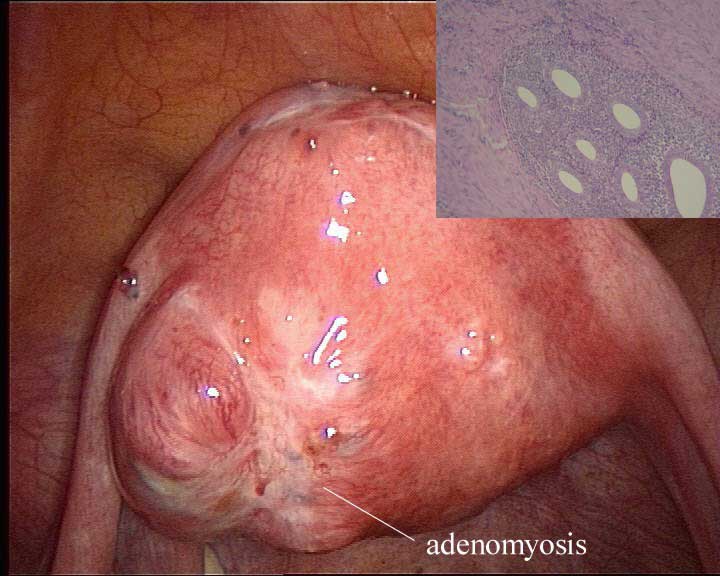Hysterectomy: Prevalence and Indications
Hysterectomy is the most frequently performed operation in women, with a life time risk varying from country to country from less than 20% to more than 40%. Overall these differences reflect more medical practice than differences in pathology between countries.
Reprinted with permission
Indications and Treatments
Hysterectomy is the most frequently performed operation in women, with a life time risk varying from country to country from less than 20% to more than 40%. Overall these differences reflect more medical practice than differences in pathology between countries.
Indications to remove the uterus are pain, a volume bigger than a pregnancy of 14 weeks, an enlarged uterus with fibroma’s causing irregular bleeding or pain and when irregular or heavy bleeding become troublesome.

click images to enlarge
The enlarged uterus
Enlargement of the uterus is almost always caused the presence of one or more fibroma’s. The rules of thumb for diagnosis and treatment are as follows
-the uterus has a volume of more than 14 weeks i.e. weights more than 800 grams. Diagnosis is made clinically and can be confirmed by ultrasound if necessary.
This is an absolute indication for an hysterectomy. To wait is not an option, since further growth of the uterus will make surgery more difficult, blood loss during surgery can be more important and a laparoscopic hysterectomy for a uterus of more than 1 kg can be technically demanding. A myomectomy can be considered if the myoma is solitairy, if the myoma is superficial or pedunculated, and if the woman wants to have children or if the woman wants to preserve the uterus for psychological reasons. A myomectomy, however, is technically and surgically more difficult than an hysterectomy.

- the uterus is polyfibromatous with complaints of pain or abnormal blood loss (generally heavy bleeding) or compression of bladder of bowel. This also is an indication for an hysterectomy eventually a myomectomy as discussed above.
-the uterus is smaller than 14 weeks pregnancy , and if the women has no complaints. Surgery is not required and can be postponed.

Bleeding problems
Menorrhagia (heavy menstruations causing anemia ) and Metrorrhagia (blood loss between menstruations)
The most frequent causes of menorrhagia (heavy bleeding) causing anemia are an endometrial polyp or a submucous fibroma. These can be diagnosed by hysteroscopy and/or ultrasound. Hysteroscopy is slightly superior for small polyps, whereas only ultrasound can ascertain whether other fibroma’s are present on the outside of the uterus and whether a fibroma extends transmurally. (a smaller uterus even with several myoma’s but without complaints is not an indication for surgery) A third cause of menorrhagia is idiopathic i.e. of unknown etiology. The slightly increased blood loss because of anovulation is not an indication for surgical treatment..
Metrorrhagia also can be caused by endometrial polyps or a submucous fibroma. It can be idiopathic, but metrorrhagia also can be the first symptom of an endometrial cancer.

Diagnosis
Hysteroscopy: this for me is the first investigation performed at the outpatient clinic. It gives clear information about the presence/absence of a cancer, a polyp or a submucous myoma. In cause of suspicious lesions they can be biopsied.
Ultrasound: if the uterus is slightly enlarged, or if a myoma is present which is partially intramural, an ultrasound is performed before a decision for further treatment is taken. Some gynaecologists who are less experienced in hysteroscopy or more experienced in ultrasound prefer also to use ultrasound for the diagnosis of polyps and submucous myoma.
TreatmentEndometrial polyp: hysteroscopic polypectomy (1 day surgery ; minimal postoperative recovery)
Submucous myoma: normally an hysteroscopic myomectomy is performed if the fibroma is smaller than 3-4 cm and at least partially/half protruding in the uterine cavity. If the myoma is bigger and transmural, an hysteroscopic resection would result in an opening of the uterine wall and is thus not feasible. Therefore an hysterectomy should be performed instead of a resection. If multiple myoma’s are present the hysteroscopic removal should be discussed together with the probability that the other fibroma’s become symptomatic and have to be removed later.
For larger myoma’s, or for myoma’s which are localized mainly in the wall, the surgeon should be more experienced because of the risk of fluid resorbtion. It is wise to discuss with the patient the risks of surgery and the alternatives. If the uterus has to be preserved at any case , eg because of a planned pregnancy, a resection in 2 or 3 times can be performed. This clearly can only be done by the most experienced.
Ideopathic menorrhagia. If medical therapy (tranxanemic acid) is unsuccessful and the uterus is smaller than 10 cm, an endometrial ablation is the preferred method. Several methods exist, but I still prefer the loop excision.
Pain
Pelvic pain can be an indication for an hysterectomy e.g. when the pain is caused by a fibroma of by adenomyosis. One should be very careful not to overuse hysterectomy in case of pelvic pain since many other causes of pelvic pain exist. My rules of thumb for pelvic pain are
-exclude other causes of pain such as a myoma, endometriosis or a painful retroversion. This means that all women should have a menstrual clinical exam, an ultrasound and a contrast enema before surgery is considered.
-surgery is planned as follows : if during laparoscopy a treatable cause of pelvic pain is found, surgery will be restricted to this eg by removing the endometriosis of by performing a high Mc Call procedure. If no treatable cause of pain is found, a laparoscopic hysterectomy is performed since adenomyosis cannot be excluded
.

Prolaps of the uterus
A severe prolaps clearly is an indication for pelvic floor repair, eventually together with a treatment for urine incontinence, and an hysterectomy. For a discussion of techniques and indications see pelvic floor Hysteroscopic surgery:
hysteroscopic myomectomy, polypectomy and endometrial ablation are minimal invasive procedures generally performed as day surgery. If feasible and not contra-indicated, hysteroscopic surgery is always preferred because of its minimal morbidity and a short hospitalisation of a few hours.
Laparoscopic surgery:
laparoscopic surgery has almost completely replaced abdominal surgery. The only remaining indications for an abdominal incision are the uterus of more than 1 kilo, the tubal reanastosis and some types of cancer surgery.
Vaginal surgery:
Vaginal surgery is the preferred surgery for most repairs of pelvic floor descent. Over the last years vaginal surgery has become complemented by laparoscopic repair of the anterior compartment (e.g. paravaginal defect) or the posterior compartment (e.g. posterior repair with mesh prosthesis).
Website: http://www.gynsurgery.org
S1E4: Dr. Kristina Adams-Waldorf: Pandemics, pathogens and perseverance
July 16th 2020This episode of Pap Talk by Contemporary OB/GYN features an interview with Dr. Kristina Adams-Waldorf, Professor in the Department of Obstetrics and Gynecology and Adjunct Professor in Global Health at the University of Washington (UW) School of Medicine in Seattle.
Listen
Study shows a healthy prenatal diet could be upstream obesity prevention strategy
December 26th 2024"Our findings support the recommendation of a healthy diet based on the current guidelines (as measured by the HEI) during pregnancy, since it may reduce patterns of infant growth outside reference ranges."
Read More
Early pregnancy cannabis use high in states with recreational legalization
November 11th 2024A population-based time-series analysis California before, during and after legalization show a rising trend in women using cannabis while pregnancy especially when the state has legalized the drug.
Read More
